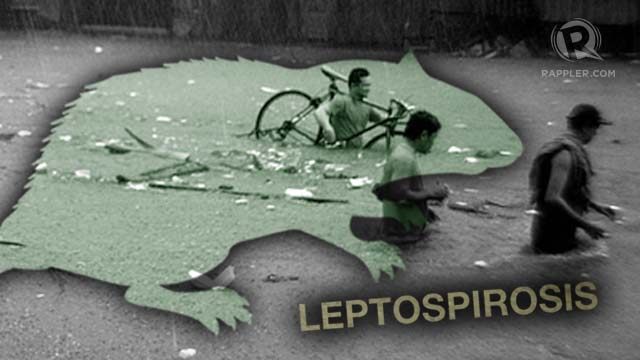SUMMARY
This is AI generated summarization, which may have errors. For context, always refer to the full article.

MANILA, Philippines – In a span of only 4 days, 7 deaths caused by leptospirosis were recorded in the Philippine General Hospital (PGH) alone.
While only 7 were fatal, a total of 33 cases of leptospirosis were admitted in the state-owned hospital from August 31 to September 4.
Dr Anthony Leachon of the Philippine College of Physicians explained that 7 deaths in 4 days is “high” given the yearly average.
Every year, an average of 680 leptospirosis cases and 40 resulting deaths are reported in the country.
The “alarming rate” of admissions comes two weeks after monsoon rains enhanced by Tropical Storm Maring caused heavy flooding.
Leachon said it is probable that the two weeks was the incubation period for most patients.
The period of incubation is the time from which an individual is exposed to an infection to the time symptoms appear.
“When it (leptospirosis) hits you already on the terminal stage, usually there’s already liver or kidney failure… Even if you go to the best centers, very little can be done. So dapat yan (it should be) preventive,” he said.
PGH is the country’s largest government hospital and is run by the University of the Philippines Manila.
High risk
Dr Rey Tan, a nephrologist at PGH, said residents of flooded areas have a high-risk exposure and must avoid wading in floods and contaminated water with or without cuts or wounds.
“Clinicians should therefore have a high index of suspicion among patients with febrile illness and high risk exposures because mortality may be as high as 15%,” Dr Tan warned.
Leptospirosis is a bacterial infection commonly acquired after rodent bites, direct contact with infected animals, or superficial cuts and open wounds which are exposed to a contaminated environment such as flood water.
Treatment guidelines issued by the government explains that “appropriate, personal protective measures” must be employed including wearing of boots and overalls during heavy flooding.
While the antibiotic prophylaxis is “not routinely recommended,” individuals such as soldiers and first-responders who intend to visit “highly endemic areas” may consider it during the “short-term exposures.”
“Currently, there is no recommended pre-exposure prophylaxis that is safe for pregnant and lactating women,” the guidelines read.
Symptoms
Medical attention must be sought if a person suffers from an illness with acute fever (e.g. colds and flu, pneumonia, etc) for at least two days and exhibits any two of the following symptoms:
- myalgia or muscle pain
- calf tenderness or pain at the back of the leg
- conjunctival suffusion or swelling of the eye
- chills
- abdominal pain
- headache
- jaundice or yellowish pigmentation of the skin
- oliguria or low urine output
In the Philippines, leptospirosis cases peak during the rainy months of July to October.
10 in every 100,000 are infected with the disease. – Rappler.com
(Below are policy recommendations issued by the PhilHealth on the diagnosis, management, and prevention of leptospirosis.)
Add a comment
How does this make you feel?
There are no comments yet. Add your comment to start the conversation.